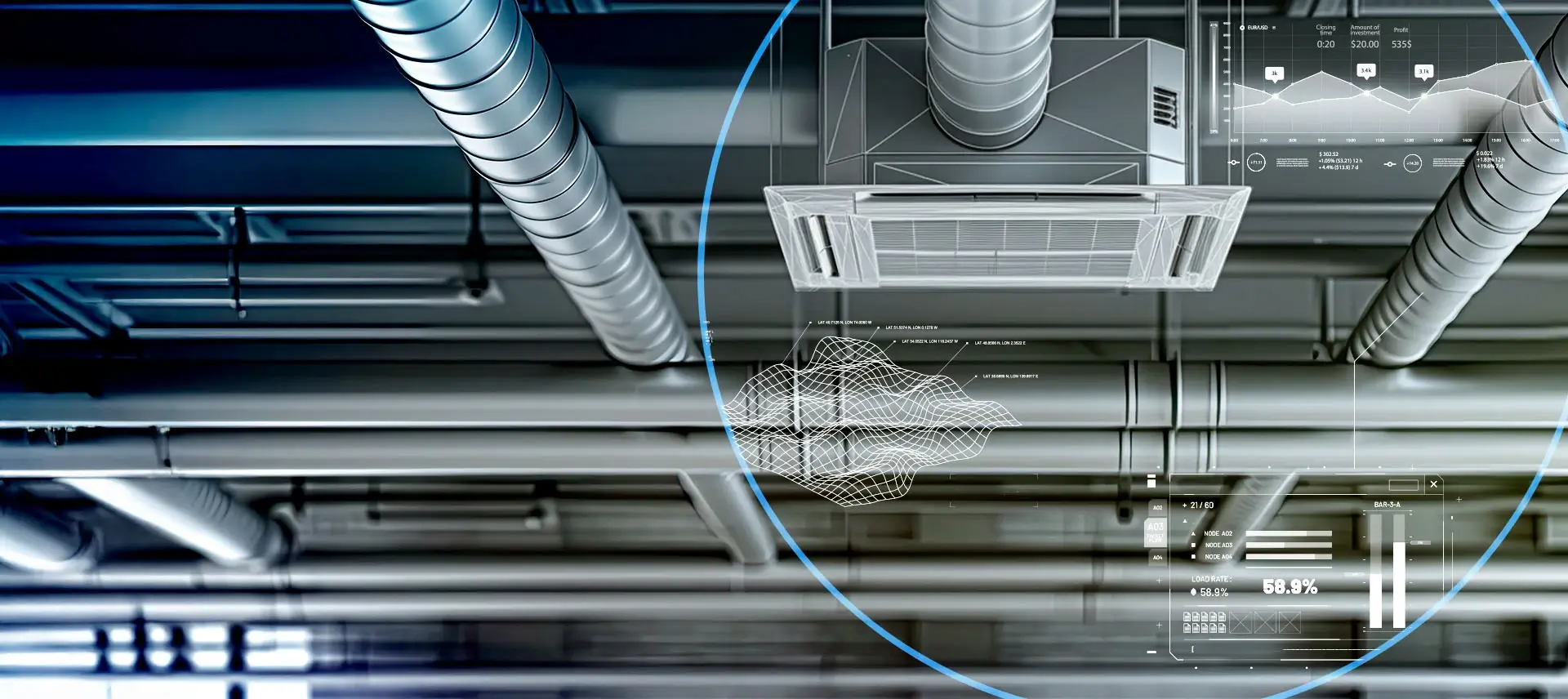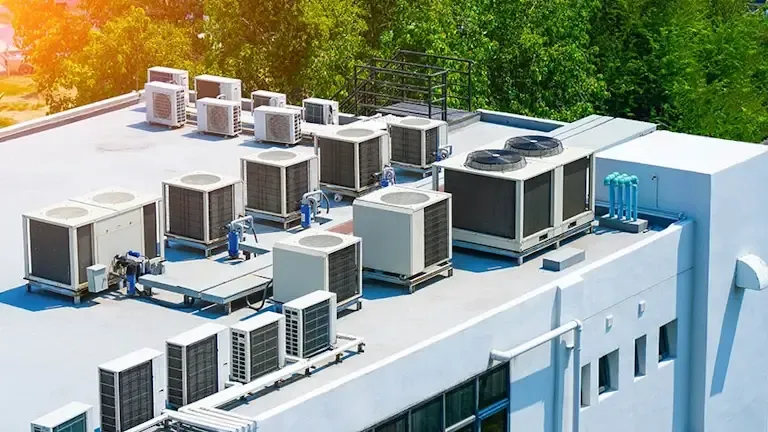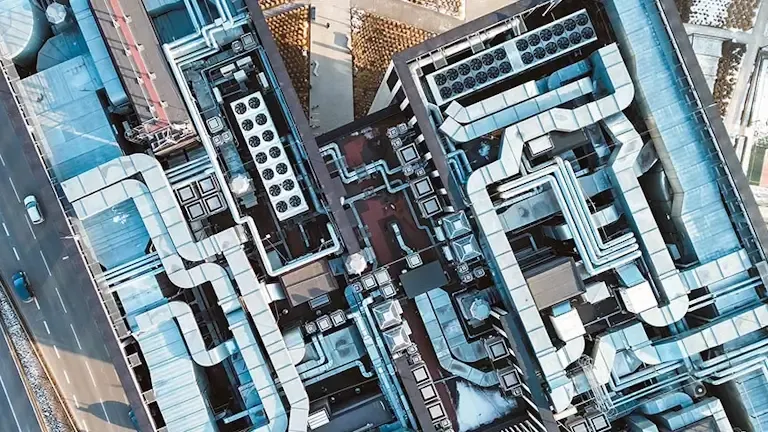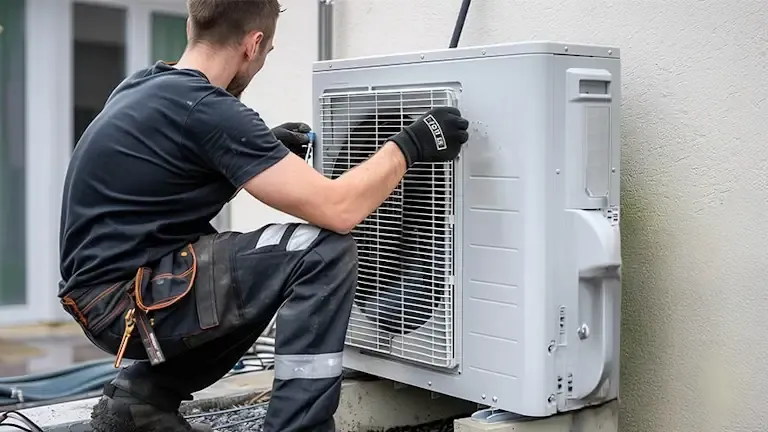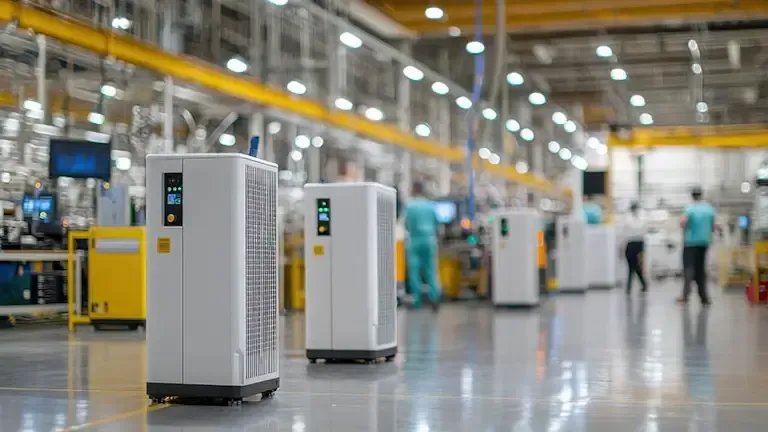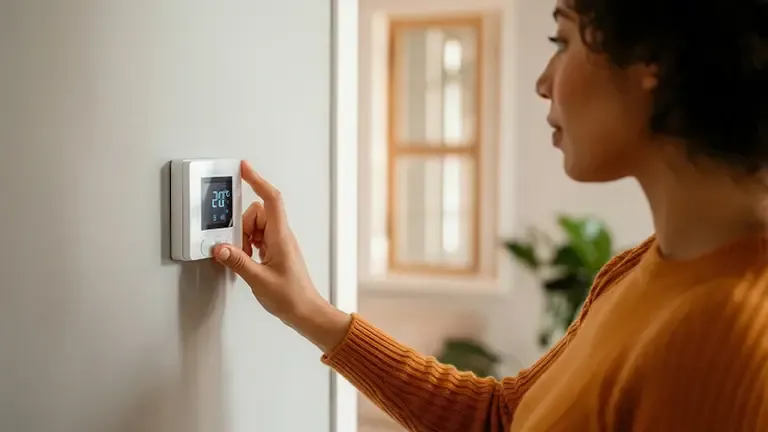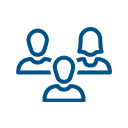HVAC Industry
Explore how virtual twins and the 3DEXPERIENCE® platform enable commercial HVAC manufacturers to achieve sustainable, high-performing systems at scale.
Designing and Manufacturing Smarter, More Efficient HVAC Systems
Heating, ventilation and air conditioning (HVAC) systems are the backbone of modern buildings, delivering comfort, clean air and safety year-round. Yet, according to the European Environment Agency, heating and cooling account for about 50% of total final energy use in the EU — a cost that is no longer sustainable.
For HVAC original equipment manufacturers (OEMs), this unsustainable consumption pattern has become a defining business challenge. Regulatory pressure, rising energy costs and growing demand for smarter, service-ready systems are converging to reshape the market. The mandate is clear: Design faster, comply without compromise and deliver lifecycle value that protects margins.
Today, digital innovation is the response that sets leaders apart. In a market racing to decarbonize building operations while achieving smart performance, HVAC manufacturers must embrace it — or risk being left behind by more agile competitors.
Key Challenges in the HVAC Industry
- Rapid Urbanization
- Regulatory Demands
- Labor Shortage
- Supply Chain Volatility
- Shifting Expectations
Rapid Urbanization
Cities are growing fast, especially in Asia and Africa. More people living in denser environments means huge demand for HVAC systems in residential towers, commercial complexes and data centers. Urban growth pressures manufacturers to deliver scalable, modular and space-efficient solutions.
Efficiency and Regulatory Demands
Heat waves, colder winters and increased humidity have become the norm. Climate change is driving both the urgency for more resilient, adaptable HVAC systems designed for extreme temperature ranges and the tightening of rules worldwide. Manufacturers who can simulate and design for future climate scenarios will gain an edge.
From refrigerant phase-outs and stricter carbon-neutral building codes to certifications like Leadership in Energy and Environmental Design (LEED) and Building Research Establishment Environmental Assessment Method (BREEAM), compliance has become a moving target. Whether it’s ASHRAE 90.1 in the U.S., the Energy Performance of Buildings Directive in the EU or refrigerant restrictions under the Kigali Amendment, the rules demand HVAC systems that deliver measurable reductions in energy use. For manufacturers, this translates into constant redesigns, more simulation and testing, and higher upfront investment — all while customers expect faster delivery at lower costs.
Skilled Labor Shortage
The industry is facing a talent gap that affects both engineering and service. As seasoned professionals retire, fewer young engineers and HVAC technicians are entering the HVAC field. This labor shortage slows everything from new product development to field service response times, making it harder to integrate emerging technologies like Internet of Things (IoT)-enabled sensors, digital controls and predictive maintenance platforms. For manufacturers, it’s a scalability problem. Without digital tools to fill the gap, talent shortages risk slowing growth, delaying launches and weakening customer satisfaction.
Supply Chain Volatility
HVAC systems rely on two distinct but interdependent supply chains. The first is the manufacturing supply chain, where disruptions in compressors, electronic controls, refrigerants, sheet metal or semiconductors can delay production. The second — and often more critical — is the installation supply chain, which involves contractors, technicians and on-site coordination. Even when equipment is ready, project timelines can stall if skilled labor, components or logistics for installation are not aligned.
For manufacturers, success means managing both. Digital continuity provides visibility across partners and timelines, helping anticipate risks, balance resources and keep projects on track from the factory floor to final commissioning.
Customer Expectations and Service Models
There’s a shift from selling hardware to providing “comfort as a service.” Manufacturers are increasingly expected to offer lifecycle services, warranties and subscription models. That changes not only product design but also business models and revenue streams. At the same time, customers now want HVAC to be part of a broader “smart building” ecosystem. IoT-enabled sensors, remote monitoring, predictive maintenance and digital twins are becoming standard. The trend is toward intelligent, self-optimizing systems that reduce downtime and energy costs.
HVAC Industry Statistics: Why Change Can’t Wait
Paired with the realities of a warming planet, soaring demands and stricter regulations, these challenges become powerful drivers for change across the HVAC industry. The following numbers speak for themselves.
- 50%
of Europe’s energy consumption is for heating and cooling, most of it from buildings
- 50–60%
increase in AC sales in South Korea this summer, driven by extreme heatwaves
- 46°C
peak temperatures in Spain during mid-2025 heatwaves triggered unprecedented AC demand in Europe
- 1,000+
French schools were partially or fully closed during the summer 2025 heatwave
- 7%
of global greenhouse gas emissions come from air conditioning, with usage expected to triple by 2050
- 40–70%
energy savings achieved through IoT-based HVAC monitoring and real-time control
Together, these numbers tell a clear story: The climate crisis is accelerating, and HVAC systems must evolve just as fast. For HVAC manufacturers, the time to rethink design, manufacturing and service models is now.
Transforming Industrial HVAC Systems With Virtual Twins
Too often, HVAC is treated as an afterthought, leading to inefficiencies, compliance risks and costly redesigns. A more forward-looking approach is to integrate HVAC planning seamlessly into the entire building lifecycle. By leveraging digital technologies such as virtual twins and a unified platform like Dassault Systèmes’ 3DEXPERIENCE platform, manufacturers and stakeholders can collaborate earlier, design smarter and ensure resilient, sustainable outcomes from the start.
Virtual twin experience
How it works: Replicates the entire HVAC system digitally to design, simulate and validate performance
Impact: Enables earlier optimization, reduces redesigns and accelerates compliance with evolving standards
The 3DEXPERIENCE platform
How it works: Connects design, engineering, production and after-sales in one unified digital ecosystem
Impact: Ensures end-to-end continuity, eliminates silos and drives efficiency across the entire product lifecycle
Virtual twins put manufacturers in control. By creating a virtual representation of HVAC systems, they can design, simulate and validate performance before production. Heating, cooling, air quality and energy use are optimized upfront, ensuring compliance and reducing redesign costs. For high-demand environments such as hospitals, data centers or clean rooms, virtual testing also enables rapid customization and safe modeling of emergency scenarios.
The 3DEXPERIENCE platform delivers lifecycle continuity. It connects every stage — from product concept and engineering to manufacturing, installation and service — in one unified digital ecosystem. This gives manufacturers the ability to collaborate seamlessly, integrate IoT data for predictive maintenance and accelerate innovation. Sustainability is embedded through lifecycle assessment and traceability, helping meet net-zero regulations and strengthening competitiveness.
With digital continuity and virtual twins, HVAC manufacturers can transform how they design, build and support systems — operating smarter, scaling faster and delivering greater value to customers.
Key Benefits of Virtual Twins for HVAC Systems
Optimize across scales and physics
Streamline from early-stage design to advanced 1D/3D workflows, addressing thermal comfort, noise and air quality.
Accelerate simulation at scale
Run cloud-based studies of thermal loads, airflow patterns and energy efficiency with expert support.
Reduce development costs
Virtually test system performance under real building conditions to minimize costly physical prototypes.
Simulate components directly in CAD
Conduct design space exploration efficiently, running up to 40 airflow simulations in half a day.
Predict performance in real-world conditions
Assess efficiency, comfort and integration for bespoke commercial building systems using measurable KPIs.
Foster collaboration across roles
Enable architects, designers and analysts to reuse parts, apply templated models and align requirements on a single digital platform.
Bridge designers and simulation experts
Empower non-engineers to iterate on CAD-driven HVAC designs quickly and accurately, shortening feedback loops and reducing redesign risks.
Engineer for quieter HVAC systems
Simulate airflow noise inside occupied spaces and external noise emissions to maximize occupant well-being and reduce community impact.
Engineering Smarter HVAC Systems Through Simulation
Ready to optimize for next-generation commercial HVAC? Join our expert to explore how virtual twins are reshaping the industry — driving energy efficiency, improving indoor air quality and enabling smarter, connected systems. Discover how a unified platform approach ensures optimal performance and long-term sustainability.
Sustainability in HVAC Manufacturing
Delivering HVAC systems with a lower carbon footprint — and ultimately achieving net-zero HVAC systems — requires more than incremental improvements. It rests on a three-part foundation:
Advanced technology
Simulation, virtual twins and connected platforms transform regulations and incentives into executable engineering practices.
Regulations
Stricter building codes, HFC phase-outs and green certifications define compliance baselines and set ambitious climate targets.
Business incentives
Reduced energy costs, improved lifecycle efficiency and higher market value turn sustainability into a measurable ROI opportunity.
Net-zero HVAC cannot be achieved by regulation or good intentions alone. OEMs must adopt tools that allow them to model, predict and optimize HVAC performance well before systems are built or installed. This is where our virtual twin technology and the 3DEXPERIENCE platform bridge the gap — turning sustainability from an aspiration into a repeatable, scalable execution strategy.
High-Performance HVAC Starts With Digital Innovation
HVAC engineering is no longer just about regulating temperature or ensuring comfort. It has become a cornerstone of climate resilience, regulatory compliance and long-term profitability. HVAC manufacturers that embrace digital innovation, unified digital platforms and sustainability are positioning themselves as leaders in this transformation. By leveraging tools like simulation and virtual twin technologies, manufacturers can model performance, anticipate inefficiencies and design smarter systems before a single unit is built.
What comes next is already taking shape: Those who adopt a platform-driven approach will not only accelerate sustainability but also set the standard for high-performance, future-ready HVAC systems.
Ready to Deep Dive Further Into the Building Equipment Sector?
Heating, Ventilation and Air Conditioning Systems Explained
Explore Our Solutions for the HVAC Industry
One unique solution to engineer, produce and service fast anywhere.
